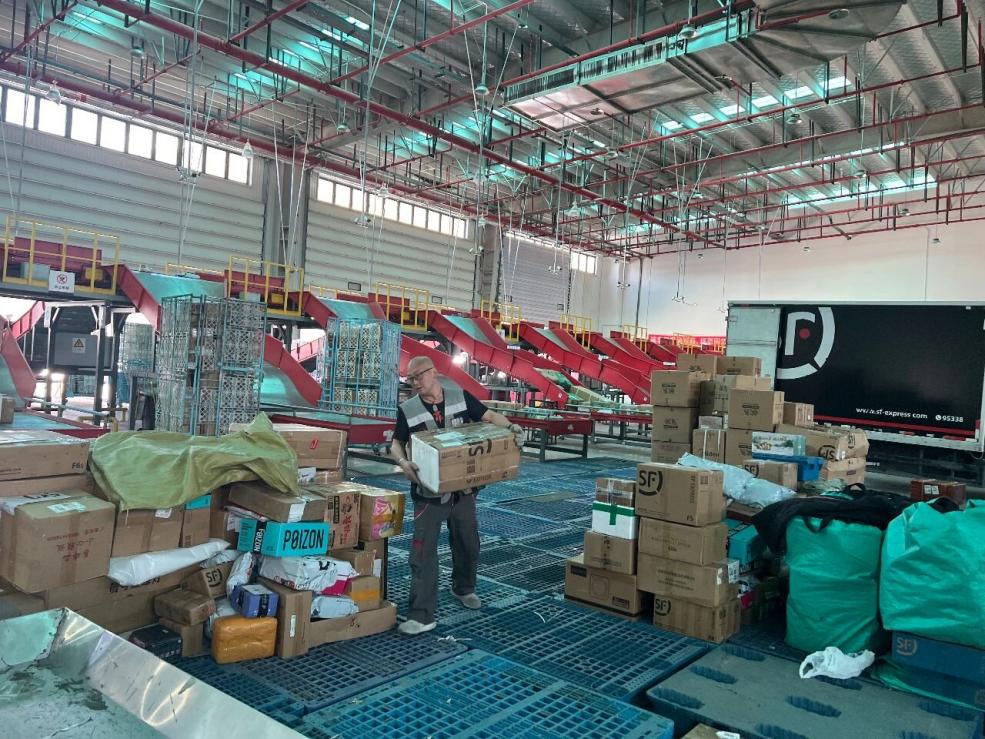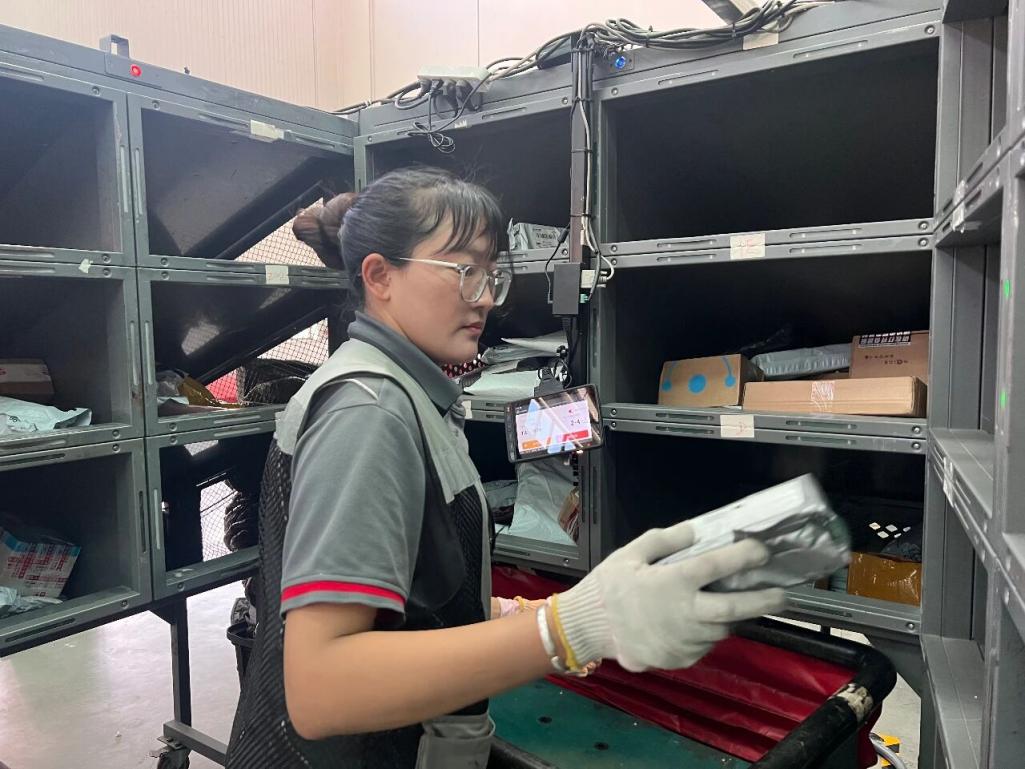




- BRNN
- BRI News
- BRNN News
- Database
Official Documents Polices and Regulations
Inter-government Documents International Cooperation BRI Countries
Business Guide Economic Data BRI Data
Trade
Investment Projects Latest projects
Cases - Content Pool

Parcels are unloaded in a transfer center of SF Express in Lhasa, southwest China's Xizang autonomous region.
At around 9 a.m., a delivery truck pulled into SF Express's logistics park on the outskirts of Lhasa, southwest China's Xizang autonomous region. Workers swiftly unloaded parcels onto conveyor belts, sorting them into destination-specific containers.
Among them was an online order by Lhasa resident Qiang Zhen - clothing shipped from Guangzhou, south China's Guangdong province, more than 3,000 kilometers away. After sorting and loading, the parcels were back on the road, heading toward local delivery stations. Inside each station, couriers arranged parcels by neighborhood, quickly packed them into delivery bags, and set off for the final leg of the journey.
By 5 p.m., Qiang received her parcel - less than 72 hours after purchase.
China's express delivery volume surged from 83 billion parcels in 2020 to 175 billion in 2024, average 20% annual growth. Daily, over 500 million parcels are processed - nearly 6,000 per second. The boom has been especially remarkable in Xizang.
Qiang recalled earlier barriers: "Years ago, shipping a 200-yuan ($28) item cost 40-50 yuan - prohibitively expensive." Recently, falling fees and free-shipping policies enabled her online shopping: "Two years ago, I bought clothes and shoes with free delivery."

A worker sorts parcels with a smart cabin in a transfer center of SF Express in Lhasa, southwest China's Xizang autonomous region.
SF Express's Tibet branch head Liu Shuxin noted annual orders grew from about 4 million five years ago to 14 million last year. Behind this growth lies rising consumer confidence and spending power among residents in Xizang. In the first half of this year, Xizang's online retail sales reached 18.07 billion yuan, up 38.6 percent year on year. Physical goods accounted for 86.1 percent of the total, growing by 39.3 percent, among the fastest nationwide.
To handle the surging demand, logistics providers are working together to find better solutions. "In the past, ground transportation to Xizang was too slow, while air transport was too costly," Liu explained. "Now, by combining the two - using a 'land + air' model - we've improved efficiency and cut costs."
Xizang's postal authorities encourage express companies and e-commerce platforms to set up local and regional warehouses. By consolidating and dispatching shipments from these hubs, companies can lower logistics costs and make free shipping more viable.

Local residents ship matsutake mushrooms at a courier station of SF Express in Tuanjie Xincun village, Lhasa, southwest China's Xizang autonomous region.
The autonomous region's logistics services have improved noticeably in recent years. Huang Haifen, who moved from Guangdong to work in Nyingchi, Xizang seven or eight years ago, said, "Now it usually takes four to seven days for a package from another province to arrive, not lightning fast, but much quicker than when I first came."
Even more impressive, she said, are the lower costs. "Many items now come with free shipping. Even when they don't, delivery usually costs only five or six yuan," she noted. "It used to be dozens of yuan, and some products even listed a fake '999 yuan shipping fee'—basically saying they wouldn't ship at all."
This year, Xizang intensified efforts to extend modern delivery services to rural and pastoral areas, ensuring equitable access. Regional subsidies support postal logistics systems and offset rural shipping costs. "Free shipping to Xizang" is now transitioning from slogan to reality.
(Photos from China Post and Express News)

Tel:86-10-65363107, 86-10-65368220, 86-10-65363106